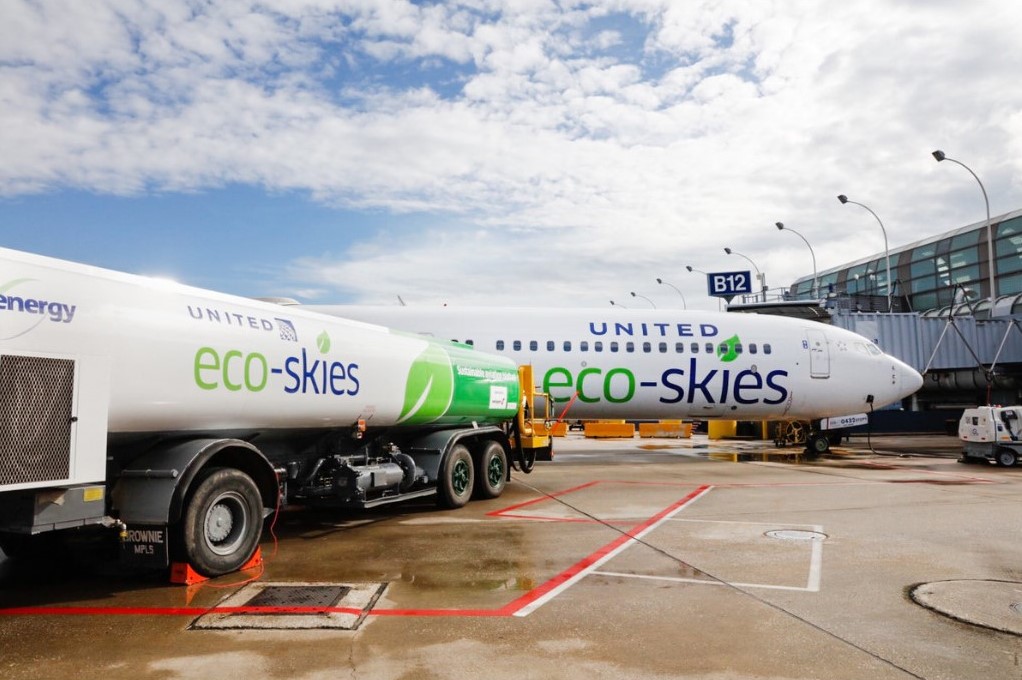AirNZ, US lawmakers spearhead renewed push for aviation biofuel
21 May, 2021
6 min read
By joining our newsletter, you agree to our Privacy Policy


Overshadowed by the recent buzz around electric aircraft and hydrogen, aviation biofuel is back on the agenda with renewed moves to get the industry up and running in countries as diverse as the US and New Zealand.
The need to get the sustainable aviation fuels (SAF) ball rolling has seen Air New Zealand call for a Kiwi biofuel industry even as US legislators lobby for a production tax credit.
In the US, the aviation industry this week applauded a move by US lawmakers Brad Schneider, Dan Kildee and Julia Brownley to introduce legislation establishing a blender’s tax credit for SAFs.
Industry trade group Airlines for America (A4A) says the tax credit would spur biofuel production, supporting jobs and energy production, while helping the US airline industry reach its goal of eliminating net carbon emissions by 2050.
READ: Strong domestic demand sees Qantas turn the corner.
“The Sustainable Skies Act would go a long way toward improving the cost-competitiveness of sustainable aviation fuel, which is crucial to rapidly expanding its deployment by US carriers,” says A4A chief executive Nicholas E. Calio.
“The U.S. airline industry has set an ambitious mid-term goal of making 2 (US) billion gallons of SAF available for carriers to use in 2030, and supportive measures like the Sustainable Skies Act will enable us to achieve that goal.”
Airlines have been looking at SAFs for more than a decade and thousands of tests and regular flights have been conducted using a mix of certified biofuel and kerosene.
Not that the industry has been idle in other areas: the introduction of new fuel-efficient aircraft such as the Boeing 787 and Airbus A350, as well as new ways of operating them, has seen overall fuel efficiency improve by more than 135 percent since 1978 and 40 percent since 2000.
But as far back as 2008, the International Air Transport Association recognized that the industry was vulnerable to criticism from climate activists and governments about its fuel use and defined a series of industry carbon reduction goals.
That backlash has intensified in recent years with the “flight shaming” movement, moves to introduce air travel carbon levies and a French legislation to ban very short air routes in instances where train travel is available.
The industry's strategy included a global carbon offsetting regime known as CORSIA but this was only ever seen as an interim step to allow breathing space for the development of SAFs and other new technologies.
Recent years have also seen a flurry of research into electric and hybrid aircraft, but these technologies are aimed at short-haul aircraft and are not seen as viable for long-haul travel or the increasing trend towards ultra-long-haul routes.
A biofuel blend made from feedstocks as diverse as forestry and agricultural byproducts, landfill waste or even used cooking oil can be easily dropped into existing fuel systems and research is underway into moving to 100 percent SAF.
Using pure biofuel offers a reduction in carbon emissions of up to 80 percent on a life-cycle basis, which includes elements such as production and transportation.
The problem has been that SAF costs about three times as much as conventional aviation fuel and is only available in limited quantities due to the dearth of production facilities.
A4A says the Sustainable Skies Act’s performance-based $US1.50 to $US2 per US gallon blender’s tax credit for SAF would encourage producers to increase production and make more available to US carriers.
Under the legislation, the credit will increase from $US1.50 per gallon by one cent for each additional percentage of lifecycle greenhouse gas emissions demonstrated above 50 percent.
The aim, according to A4A, is to incentivize the deployment of SAFs providing higher emission reductions.
There are already some carriers such as United Airlines, Alaska Airlines and Delta Air Lines in the US, KLM in the Netherlands and Scandinavia’s SAS that are either using biofuels or have entered into purchase agreements.
A number of others are continuing to conduct trials.
But a big problem is the high cost of establishing production and this is an issue Air New Zealand tackled in a recently released white paper. Aviation is particularly crucial sector in New Zealand because of its large international tourism industry.
The airline’s head of sustainability, Meagan Schloeffel, predicts new technologies such as electric, hybrid or hydrogen aircraft could be available as soon as 2030 for shorter domestic and regional flights.
Like other experts, she notes that SAFs are the key to reducing emissions for long-haul travel.
“With the right policy settings and investment in place, domestic production of SAF could be available as soon as 2025,’’ she says in a recent blog. “Air New Zealand recently shared a white paper with the New Zealand Government outlining the policy and investment settings required to make SAF a reality in this country.”
To achieve that goal, the Kiwi carrier’s white paper recommends setting up an aviation–specific decarbonization advisory body similar to those established in the UK and Norway.
It also wants a feasibility study to confirm high-level production cost estimates, confirm feedstock supply, determine what policies and investment strategies should apply and which region of the country would benefit most from an SAF industry.
Also needed, it says, is an SAF mandate incentivizing investment as well as government polices, investment and funding mechanisms to close the commercial gap between SFAs and fossil fuels.
The aim would be to stand up a domestic biofuel industry capable of meeting 50 percent of New Zealand’s aviation fuel demand by 2050, reducing its reliance on imported fuels and creating jobs..
"As well as significantly reducing carbon emissions, we expect a domestic SAF industry to bring broader social and economic benefits for New Zealand,’’ says Schoeffel.
“SAF would create skilled jobs benefiting the regions – both in the construction and operational phases of a plant.
“The SAF Consortium estimates this could result in around 6,400 temporary infrastructure development jobs, 1,800 new permanent jobs and 5,000 additional indirect jobs (such as tradespeople, caterers and security). A New Zealand SAF plant would also produce some biofuel for the country’s wider transport sector.”
She adds: “If we get this right, SAF presents a real opportunity for New Zealand to show the world decarbonization of the aviation sector can be done.”
Next Article
2 min read
Qantas triples profit but misses mark

Get the latest news and updates straight to your inbox
No spam, no hassle, no fuss, just airline news direct to you.
By joining our newsletter, you agree to our Privacy Policy
Find us on social media
Comments
No comments yet, be the first to write one.
